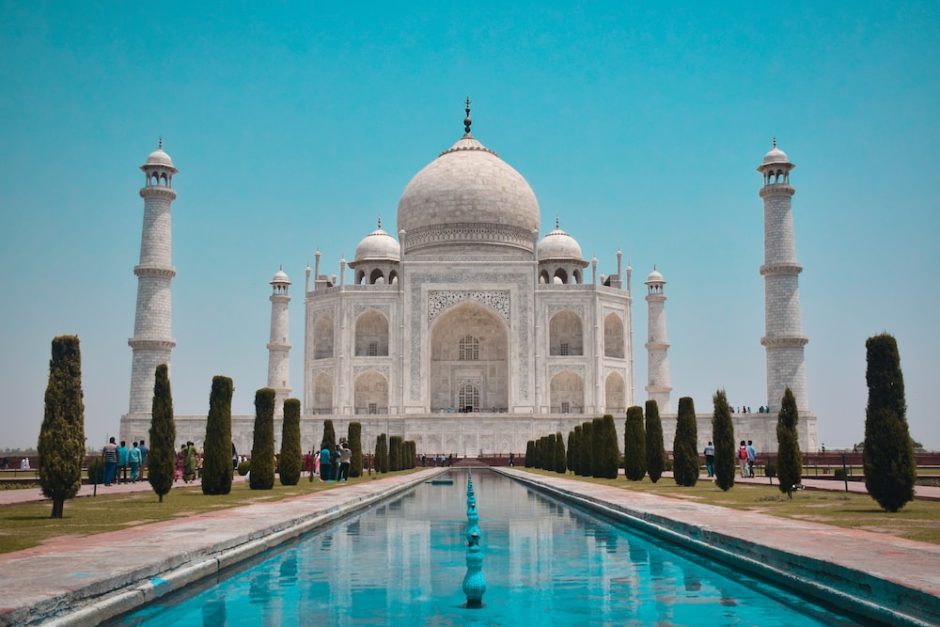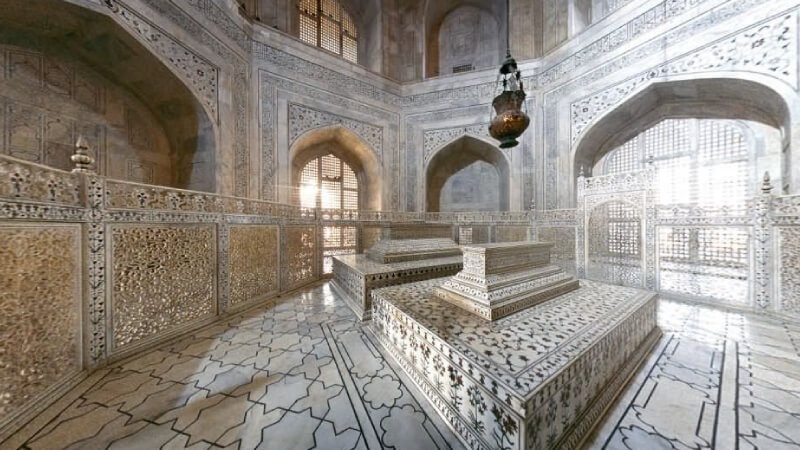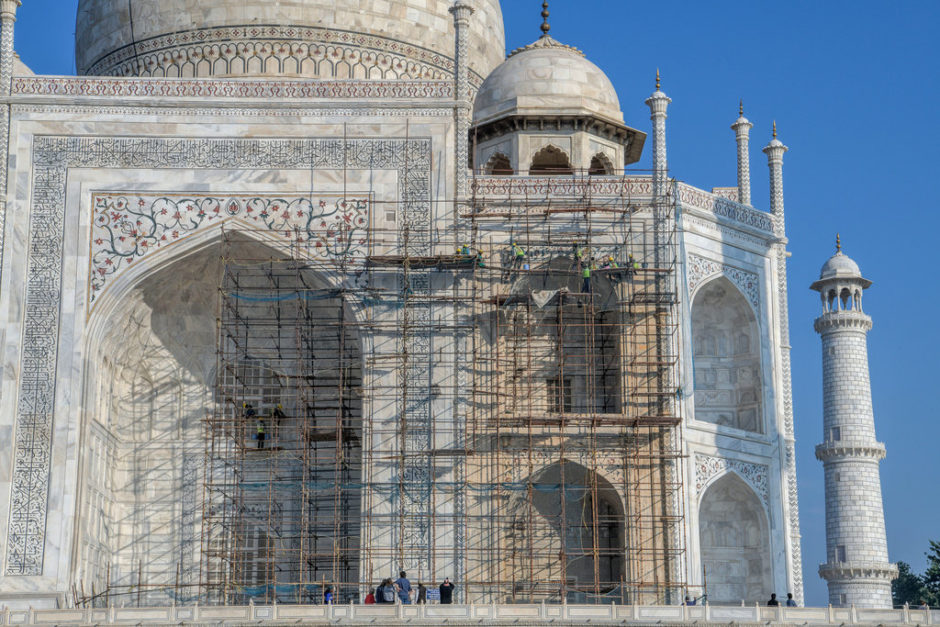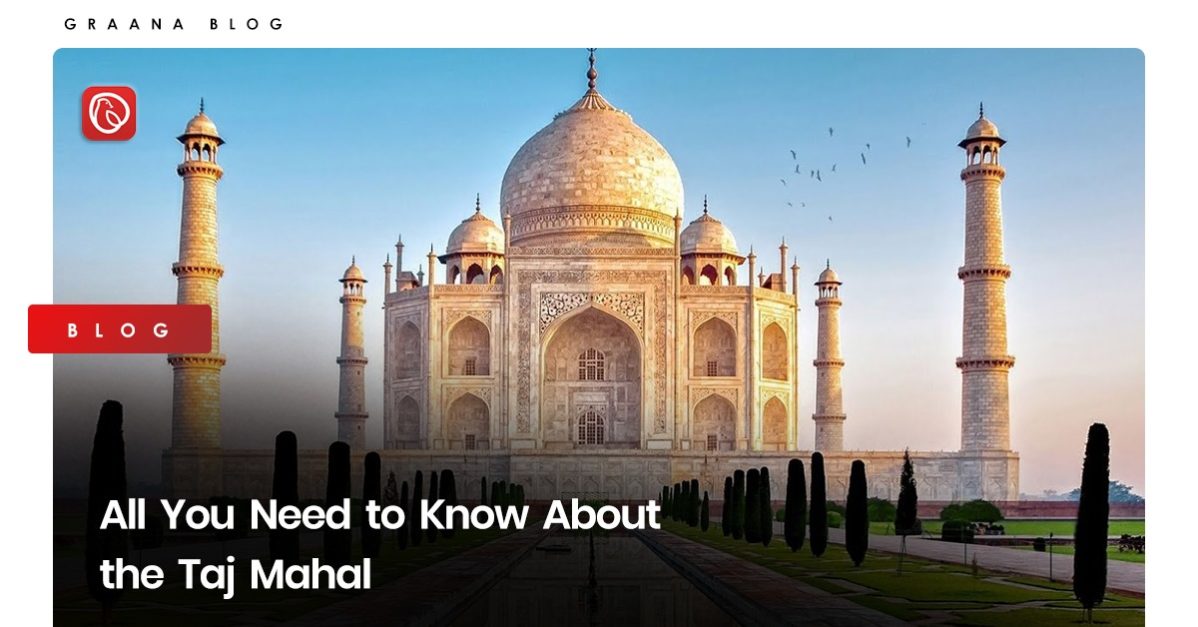The Taj Mahal is a magnificent white marble mausoleum located in Agra, India. It was built by the Mughal emperor Shah Jahan in memory of his third wife, Mumtaz Mahal. The Taj Mahal is widely considered one of the 7 wonders of the world. It is one of the most beautiful buildings in the world and a UNESCO World Heritage Site.
In this blog, Graana.com provides a complete overview of the history, location and architecture of the Taj Mahal.
History of Taj Mahal
The story of the Taj Mahal begins with the Mughal emperor Shah Jahan and his third wife, Mumtaz Mahal. She accompanied Shah Jahan on all of his military campaigns and was a constant companion and advisor to him.
In 1631, Mumtaz Mahal died during the birth of their 14th child. The emperor was said to be heartbroken by her death and decided to build the most beautiful building in the world in her memory.
Construction began in 1632 and was completed in 1653. The emperor assembled a team of more than 20,000 artisans and craftsmen to work on the project, which was built using the finest materials from all over India and Central Asia.
Location and Structure

The Taj Mahal is located in the northern Indian city of Agra, on the southern bank of the Yamuna river. The mausoleum is set within a large walled complex, which includes a mosque and a guesthouse, as well as expansive, beautiful gardens. The entire complex is set on a raised marble platform, with the mausoleum at the centre of the complex.
The mausoleum itself is an Islamic architectural masterpiece. The building is constructed entirely of white marble, which was brought from the quarries of Makrana, Rajasthan. The marble was then inlaid with semi-precious stones in a technique known as “pietra dura” to create intricate designs.
The mausoleum has a central dome that is surrounded by four smaller domes and is flanked by four slender minarets. The central dome is topped with a lotus design, which is a symbol of the universe in Hinduism and Buddhism.
The surrounding complex is also of great architectural significance. The mosque and the guesthouse, located on either side of the mausoleum, are made of red sandstone and white marble.
They are thought to have been used by the emperor and his courtiers to view the mausoleum. The garden surrounding the complex is divided into four sections by water channels, representing the Islamic paradise gardens. It is filled with flowers, fruit trees, and cypress trees, and the pathways are lined with fountains.
Interior of the Taj Mahal

The interior chamber of the Taj Mahal showcases intricate and luxurious decoration, with the use of precious and semi-precious gemstones in its inlay work, known as lapidary, rather than traditional pietra dura.
The walls inside the chamber are around 25 metres tall and adorned with a “false” dome decorated with a sun motif. At the ground level, there are eight pishtaq arches, and each lower arch is topped by another arch mid-way up the wall.
The chamber also receives light through roof openings. The cenotaphs are encircled by an octagonal marble screen with intricate pierce work.
The other surfaces inside the chamber are adorned with delicate inlaid designs, including semi-precious stones forming vines, fruits, and flowers. The chamber walls feature dado bas relief, intricate lapidary inlay, and calligraphy panels that reflect the design elements seen throughout the exterior of the complex.
Symbolism and Significance
The Taj Mahal is full of symbolic meaning. The four minarets that frame the central dome represent the four caliphs of Islam.
The overall design of the Taj Mahal, with its central dome and four flanking minarets, is thought to symbolise the unity of the traditional Islamic paradises, with the central dome representing the afterlife and the minarets representing the four corners of the world.
The use of pietra dura inlaid design also contains Islamic geometric patterns, calligraphy from the Quran and many references to the glory of the emperor and the beauty of the queen. Furthermore, the location of the Taj Mahal is also believed to have symbolic significance. The mausoleum is situated on the southern bank of the Yamuna river. It is said to represent the transition from life to death and the afterlife.
The use of white marble is said to represent the spirit of the deceased and the purity of their soul.
Conservation and Restoration

Over the centuries, the Taj Mahal has undergone significant damage. In the 20th century, the Indian government and UNESCO launched a major conservation and restoration initiative to preserve the building.
This included cleaning the marble surfaces, replacing damaged sections of the building, and stabilising the foundation.
In recent years, the Indian government has also implemented stricter environmental regulations in order to reduce pollution around the Taj Mahal. Despite these efforts, pollution remains a major threat to the preservation of the building, as the smoke and dust from nearby industries can cause discolouration and damage to the marble.
Controversies
In 2017, several court cases were inspired by the Indian historian P. N. Oak’s theory that the Taj Mahal is actually a Hindu temple. However, the Archaeological Survey of India (ASI) stated that there is no evidence to support this claim.
Despite this, some members of the Bharatiya Janata Party (BJP), have continued to assert that the 17th-century monument was originally a Hindu temple called “Tejo Mahalaya” and was built by Shah Jahan after destroying the temple and housing a Shiva linga.
Union Minister of Culture Mahesh Sharma also stated in 2015 that there was no evidence to support this claim. There was another controversy in 2017 when the Uttar Pradesh government did not include the Taj Mahal in its official tourism booklet “Uttar Pradesh Tourism – Unlimited Possibilities”.
Some members of the BJP, including MLA Sangeet Som, have referred to the monument as a “blot” on Indian culture, built by traitors. This sparked criticism from various politicians, including AIMIM MP Asaduddin Owaisi and Jammu & Kashmir National Conference leader Omar Abdullah. However, Chief Minister Yogi Adityanath stated that the government would focus on the tourism potential of every monument.
Conclusion
Today, the Taj Mahal is one of the most popular tourist sites in the world, attracting millions of visitors each year. Its stunning beauty and rich history continue to awe and inspire visitors from all over the world.
The Taj Mahal is not only a tomb but also a symbol of love, architectural excellence, and a symbol of India’s rich cultural heritage. The Taj Mahal is a true masterpiece of Mughal architecture that continues to fascinate people centuries later.
To know more about the historical sites in Pakistan and other parts of the world, visit Graana blog.




